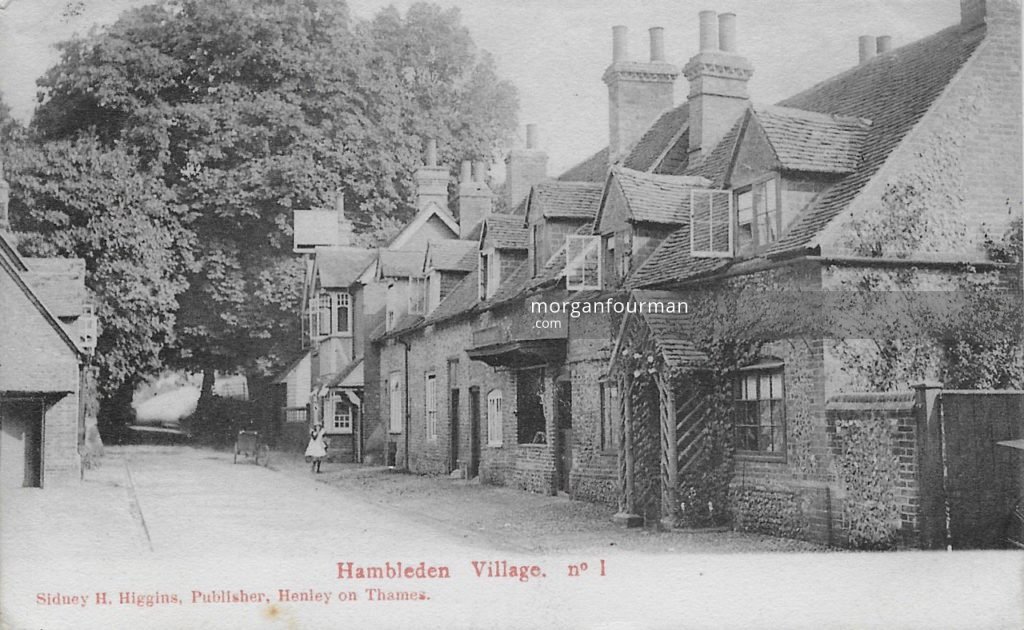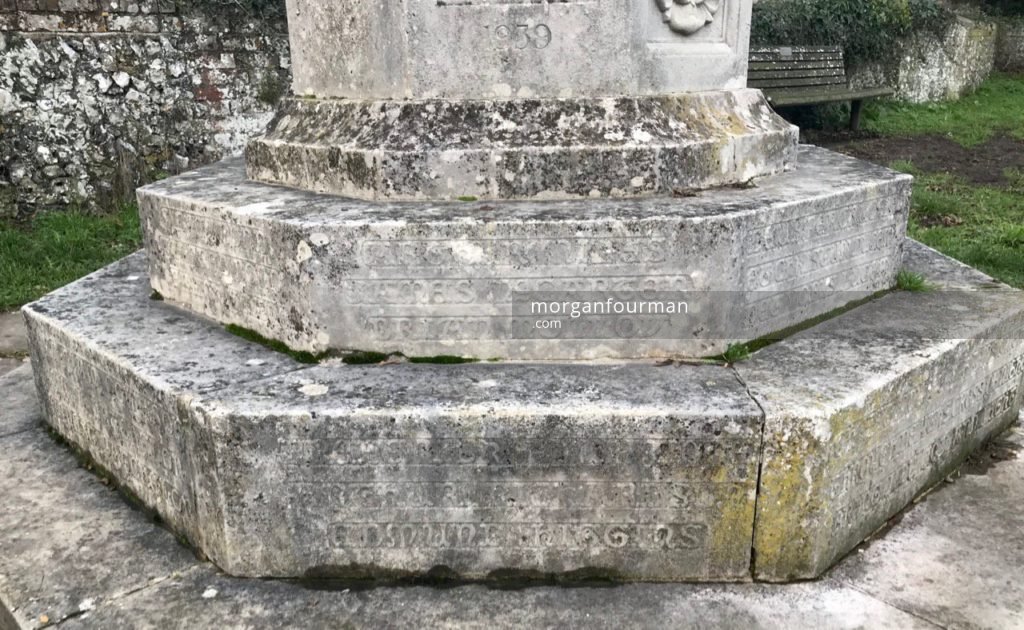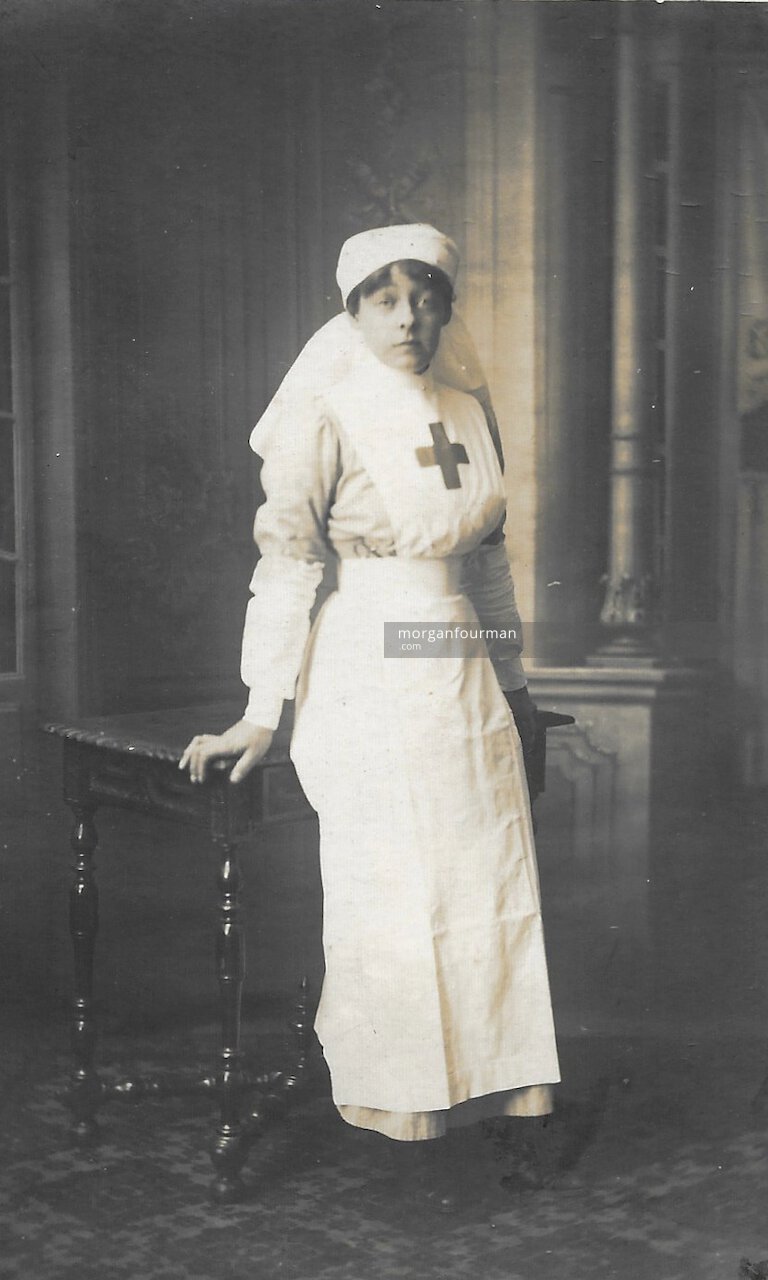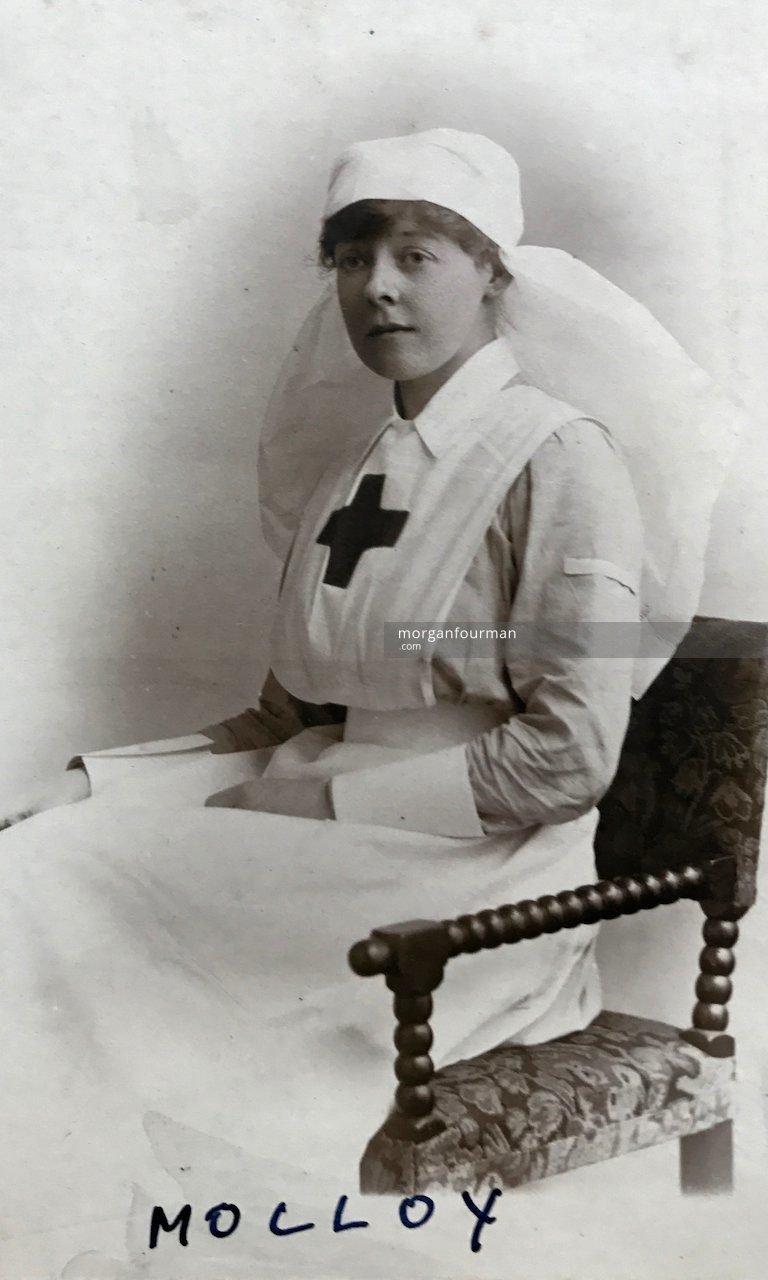Clarice Molloy served as a nurse in the First World War and was a close colleague of Molly Evans. She was born on 20 Oct 1880 in Hambleden, near Henley on Thames. Her father was the Irish composer and poet James Lynam Molloy who died in 1909.

Hambleden Village. Postcard by Sidney H. Higgins, Henley on Thames. From Molly Evans’ Collection (postmarked Jul 1905)
Her brother Brian Charles Baskerville Molloy was killed on 1 Nov 1914. Her other brother Maurice Tracy Molloy is named as next of kin on her nursing papers.
‘Molloy’ is mentioned very frequently in Molly Evans’ diaries. Their nursing careers run closely parallel and indeed make a number of identical steps. Both did early service in England in 1914 and 1915 before coming out to France in Nov 1915 where both served at No 2 General Hospital in Le Havre as VAD nurses. Molly resigned and returned to England at the end of Nov 1916 to care for her mother. Clarice Molloy left the No 2 General Hospital Le Havre in Jan 1917 a month or so later.
Clarice Molloy, Molly Evans and another No 2 colleague, Frances Ashlin all seem to have ‘rejoined’ the VAD as nurses at the First Western General Hospital in Birkenhead on 15 Mar 1917. Molly’s diary recounts that day as follows, starting with breakfast at the Lawn, Hagley :
Usual Breakfast early – started packing early. Tight squeeze. Sat and talked with Aunt Nettie and mother. Early Lunch. Trap. Caught 1.20 Junction met Daddy Wolverhampton – Carriage to myself – joined Molloy at Crewe, Ashlin at Liverpool. Arrived Birkenhead. Choice of beds – Nurses – Supper. Bed.
Finally six months later, the two took up an opportunity together to return to France, when both joined the Queen Alexandra Hospital in Dunkirk, run by the Friends’ Ambulance Unit. Again the diary records that Molly was ‘joined by Molloy’ in Folkestone on 15 Sep 1917. Molly had travelled directly from Birkenhead three days earlier, met her mother and Nettie on the Welsh coast at Borth for one day and then travelled to London, where she had a series of interviews before embarking on the boat train at Charing Cross. This rendez-vous was evidently engineered in a series of telegrams and letters and allowed the two women to make the last leg of the journey to Dunkirk together, setting out the following morning by train from Boulogne. This was their first experience of camouflaged trains, “crammed with English Officers”. Their first night with the FAU was spent under air raid in “darkness” in the dugout.
Clarice Molloy was about ten years older than Molly. She was a Catholic, Molly an Anglican, but both clearly ‘enjoyed’ and accepted working with the Quakers in the dangerous and demanding circumstances in Dunkirk. Both spoke French and were expected to deal with the many local patients as it was not purely a military hospital.
They both left the Queen Alexandra Hospital on the same date, 27 Dec 1918. Despite the evident closeness of the two women during the war and the sharing of so many important memories, it is not clear that they ever met more than once after the war. Molly visited her at her ‘London flat’ on 5 Jun 1919 shortly before her marriage.
In Molly’s address book from the 1930’s it gives the address as Reverend Mother Molloy at the Convent of our Lady of the Cenacle in Manchester Moss Side.
In a surviving 1948 letter from another FAU nurse, Dorothy Nicholson (née Borwick), Dorothy laments to Molly that she had lost contact with Molloy as she was ‘enclosed’. This contrasted with another Catholic FAU nurse, Aileen Moriarty, who was still in frequent contact with Dorothy despite her taking vows and who was residing in Stanbrook Abbey, Worcester.
Clarice Molloy remained under her religious vows and died in 1973 in Liverpool aged 93.
Sources and Notes
- Friends’ Ambulance Unit Database
- Voluntary Aid Detachment Red Cross Database
- Molly Evans’s Pocket Diaries and Scrapbook
- The family house in Hambleden where her mother died in 1912 was Woolleys, later owned by another song-writer Tim Rice.


